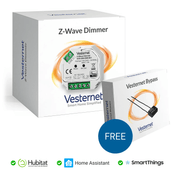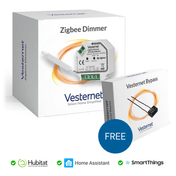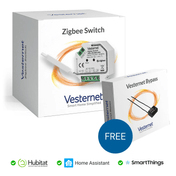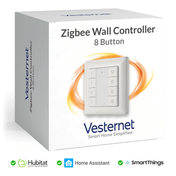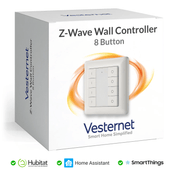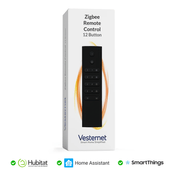Modern homeowners increasingly seek intuitive control over their lighting and appliances, moving beyond traditional switches that offer limited functionality and no integration with smart home ecosystems. The challenge lies in finding wall control solutions that combine the familiarity of physical switches with advanced automation capabilities.
Automated wall switches and controllers bridge this gap by delivering seamless smart home control through familiar interfaces. These intelligent devices offer wireless connectivity, scene activation, multi-function capabilities, and customisable automation while maintaining the tactile experience users expect from wall-mounted controls.
This comprehensive guide examines eight critical factors for selecting automated wall switches, from protocol compatibility and installation requirements to advanced features and integration capabilities, helping you make informed decisions for your smart home upgrade.
1. Protocol Compatibility: Choosing Between Z-Wave and Zigbee
The foundation of any successful smart home automation system lies in selecting the right wireless protocol for your automated wall switches. Both Z-Wave and Zigbee offer distinct advantages, but understanding their technical differences ensures optimal performance and future-proof expansion capabilities.

Key protocol considerations:
- Z-Wave operates on dedicated frequency bands, reducing interference from WiFi networks
- Zigbee offers faster data transmission and typically lower power consumption
- Mesh networking capabilities extend range and improve system reliability
- Hub compatibility determines which devices can integrate with your existing ecosystem
Your choice between these protocols significantly impacts long-term system scalability. Z-Wave switches excel in larger homes where extended range and robust mesh networking prove essential, while Zigbee switches often provide more responsive control in dense device environments where speed matters most.
2. Switch Configuration: Single vs Multi-Channel Control Options
Understanding channel configuration helps determine which switches best serve your specific room layouts and control requirements. Single-channel switches provide straightforward on-off control, whilst multi-channel options enable sophisticated zone management from a single wall location.
Multi-channel switches particularly benefit open-plan spaces where different lighting zones require independent control. A dual-channel switch can manage both ambient ceiling lights and task lighting simultaneously, creating layered illumination schemes that adapt to various activities throughout the day.

Configuration benefits by application:
- Single-channel: Simple bedroom lighting or bathroom fan control
- Dual-channel: Kitchen with under-cabinet and overhead lighting
- Multi-channel: Living areas with accent, task, and ambient lighting
3. Wiring Requirements: 2-Wire vs 3-Wire Installation Flexibility
Wiring configuration represents one of the most critical factors when selecting automated wall switches, as it directly determines installation feasibility and long-term performance reliability. Understanding your home's existing electrical infrastructure helps avoid costly rewiring whilst ensuring optimal switch functionality.
Wiring configuration impacts:
- 2-wire systems work in most older homes but may require bypass accessories for LED loads
- 3-wire installations with neutral connections provide superior performance and reliability
- Low-load scenarios often need capacitor bypasses to maintain proper switch operation
- Neutral wire availability enables advanced features like power monitoring and status reporting
Many modern smart switches offer flexible wiring options, accommodating both 2-wire and 3-wire configurations. This versatility simplifies retrofit installations whilst providing upgrade paths when neutral wiring becomes available during future renovations.
4. Button Types and Control Methods: Momentary vs Toggle Operations
Button technology significantly influences user experience and automation capabilities. Traditional toggle switches provide familiar mechanical feedback, whilst momentary controllers enable sophisticated scene activation through various press patterns and combinations.
Momentary switches excel in smart home environments where single devices must control multiple functions. These controllers can trigger different scenes based on press duration, multiple taps, or button combinations, maximising control flexibility without cluttering wall space with additional switches.

Control method advantages:
- Toggle switches: Familiar operation for all household members
- Momentary buttons: Multiple scene activation from single controllers
- Touch panels: Sleek aesthetics with customisable button configurations
5. Scene Integration and Multi-Function Capabilities
Advanced scene control transforms basic wall switches into comprehensive home automation command centres. Modern switches support multiple activation methods, enabling complex lighting and appliance sequences through simple button interactions that family members can easily master.

Scene activation methods:
- Single press: Standard on/off control or primary scene activation
- Double press: Secondary scenes like movie mode or security lighting
- Hold functions: Dimming controls or whole-house automation triggers
- Release events: Fine-tuned control over fade rates and transition timing
Multi-function capabilities allow single switches to control diverse connected devices beyond traditional lighting. Advanced controllers can simultaneously adjust thermostats, activate security systems, and control entertainment equipment, creating comprehensive automation sequences that respond to daily routines and preferences.
6. Load Capacity and Power Management Features
Load capacity directly impacts which appliances and lighting configurations your automated wall controller switches can safely control. Understanding power ratings ensures reliable operation whilst preventing damage to both switches and connected devices through proper electrical matching.
Modern smart switches increasingly incorporate power monitoring capabilities, providing valuable insights into energy consumption patterns. These features enable proactive energy management whilst helping identify inefficient devices that may benefit from replacement or adjustment.
Power management benefits:
- Real-time energy consumption monitoring for connected devices
- Configurable power failure recovery states maintain preferred settings
- Over-current protection prevents damage during electrical faults
- Load scheduling optimises energy usage during peak rate periods
7. Hub Integration and Standalone Operation
Balancing hub-dependent automation with standalone reliability ensures your switches continue operating effectively even during network outages or hub maintenance periods. This consideration particularly matters for essential lighting circuits and security-related applications.
Integration approaches:
- Direct device pairing enables immediate switch-to-device communication
- Hub integration provides centralised control and advanced automation logic
- Hybrid operation combines local control with cloud-based scheduling
- Offline modes maintain basic functionality during connectivity issues
The most robust installations combine hub integration for advanced automation with direct pairing capabilities for essential circuits. This approach ensures that critical lighting remains functional whilst maintaining access to sophisticated scenes and scheduling when network connectivity allows.
8. Installation Flexibility and Mounting Considerations
Physical installation requirements significantly influence switch selection, particularly in retrofit scenarios where existing electrical boxes and wall configurations impose constraints. Understanding mounting options helps ensure proper fit whilst maintaining aesthetic appeal.
Modern switches accommodate various installation scenarios through flexible form factors and mounting mechanisms. Flush-mount options integrate seamlessly with standard electrical boxes, whilst surface-mount alternatives provide solutions where recessed installation proves impractical or expensive.
Installation considerations:
- Standard gang box compatibility ensures straightforward replacement installations
- Depth requirements accommodate various electrical box configurations
- Glass touch panels provide premium aesthetics with easy cleaning
- Modular designs enable future expansion without rewiring
Our Automated Wall Switch Recommendations
Based on extensive testing and customer feedback, we've curated our top automated wall switch recommendations to suit different installation scenarios and automation requirements. These selections represent the best balance of functionality, reliability, and value across various use cases.
For budget-conscious installations seeking reliable Z-Wave connectivity, the Vesternet Z-Wave Switch offers flexible 2-wire or 3-wire installation with configurable power failure states and seamless hub integration. The slightly more advanced Vesternet Z-Wave 2 Channel Switch provides dual-channel control with comprehensive power metering capabilities, ideal for managing multiple lighting zones or appliances from a single wall location.
Wireless Scene Controllers
Users prioritising wireless scene control should consider the Vesternet Zigbee Wall Controller series, available in 2-button and 4-button configurations that provide up to 12 unique automation triggers through pushed, held, and released events. These controllers excel in standalone operation and direct device control scenarios.
Premium Touch Panel Solutions
For premium installations demanding sophisticated control, the MCO Touch Panel Switch GEN5 delivers elegant 4-button glass touch operation with integrated relays, supporting up to four high-wattage loads while providing seamless scene integration and professional-grade aesthetics suitable for contemporary smart homes.
Conclusion
Selecting the right automated wall switches transforms your home's control interface while maintaining the intuitive operation that family members expect. The key factors—protocol compatibility, wiring requirements, scene capabilities, and load management—directly impact both immediate functionality and long-term automation potential.
Start by auditing your current wiring configuration and identifying which rooms would benefit most from intelligent control. Consider your smart home ecosystem's protocol requirements and evaluate whether standalone operation or hub integration better serves your automation goals. Remember that proper installation and quality components ensure reliable operation for years to come.
Explore our comprehensive switches and wall controllers collections to discover the perfect automated control solutions for your home. Our technical experts are always available to provide personalised guidance on protocol selection, installation requirements, and optimisation strategies tailored to your specific smart home setup.










